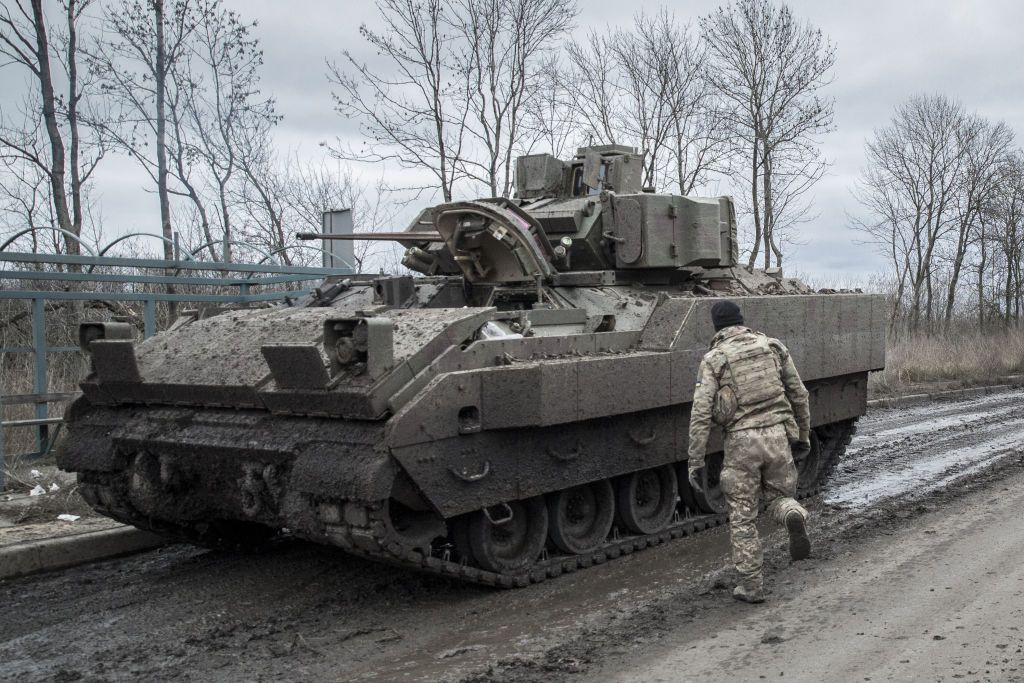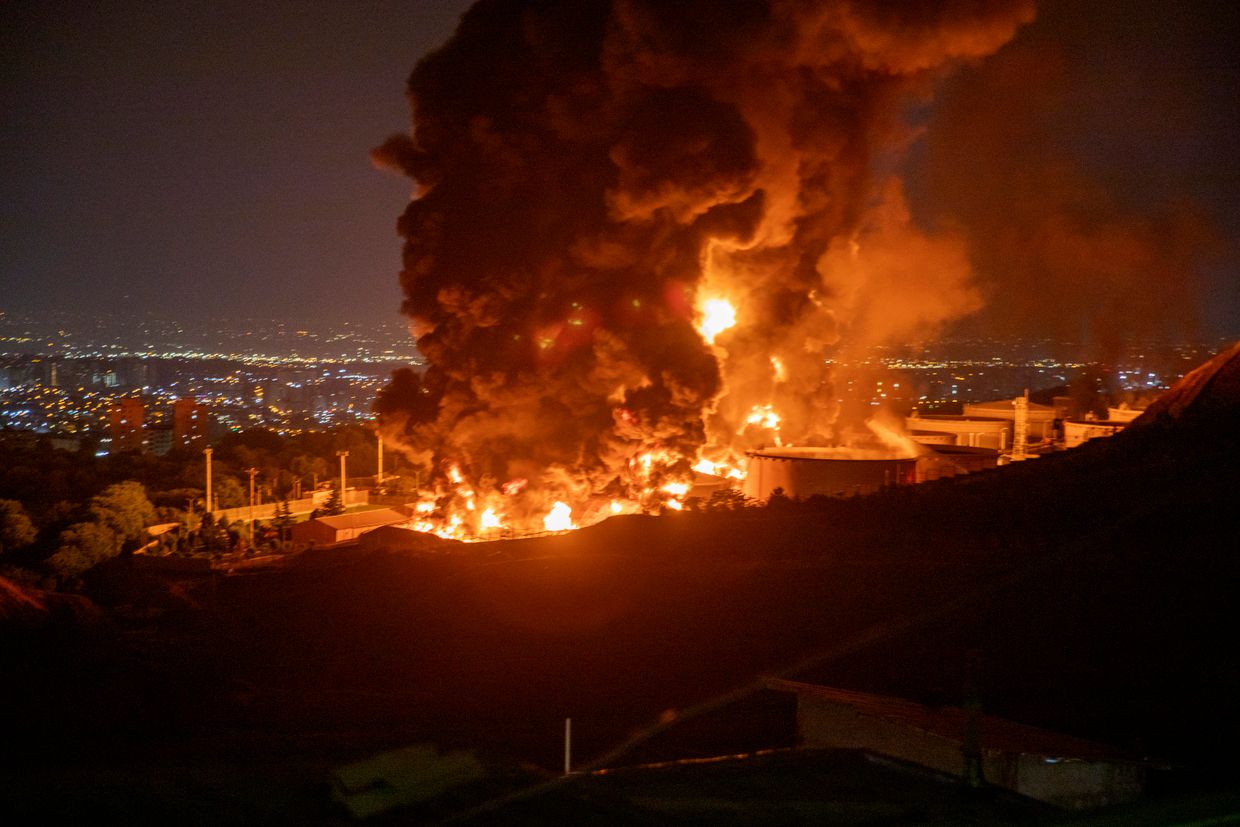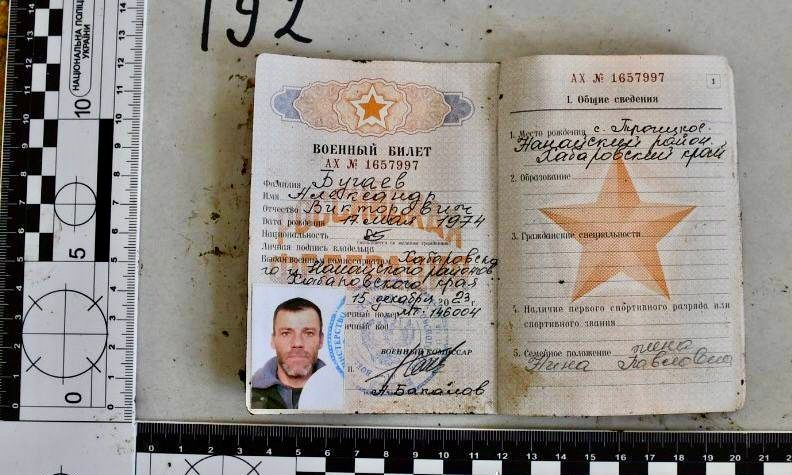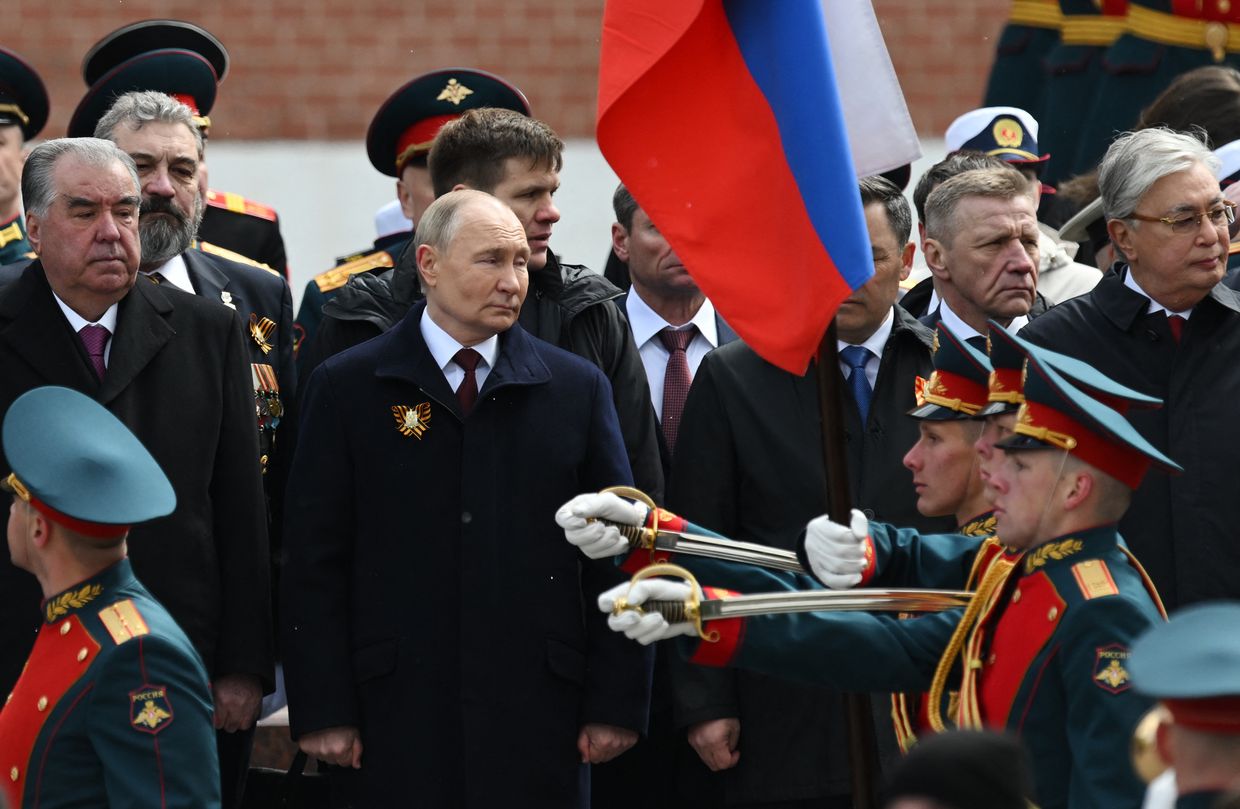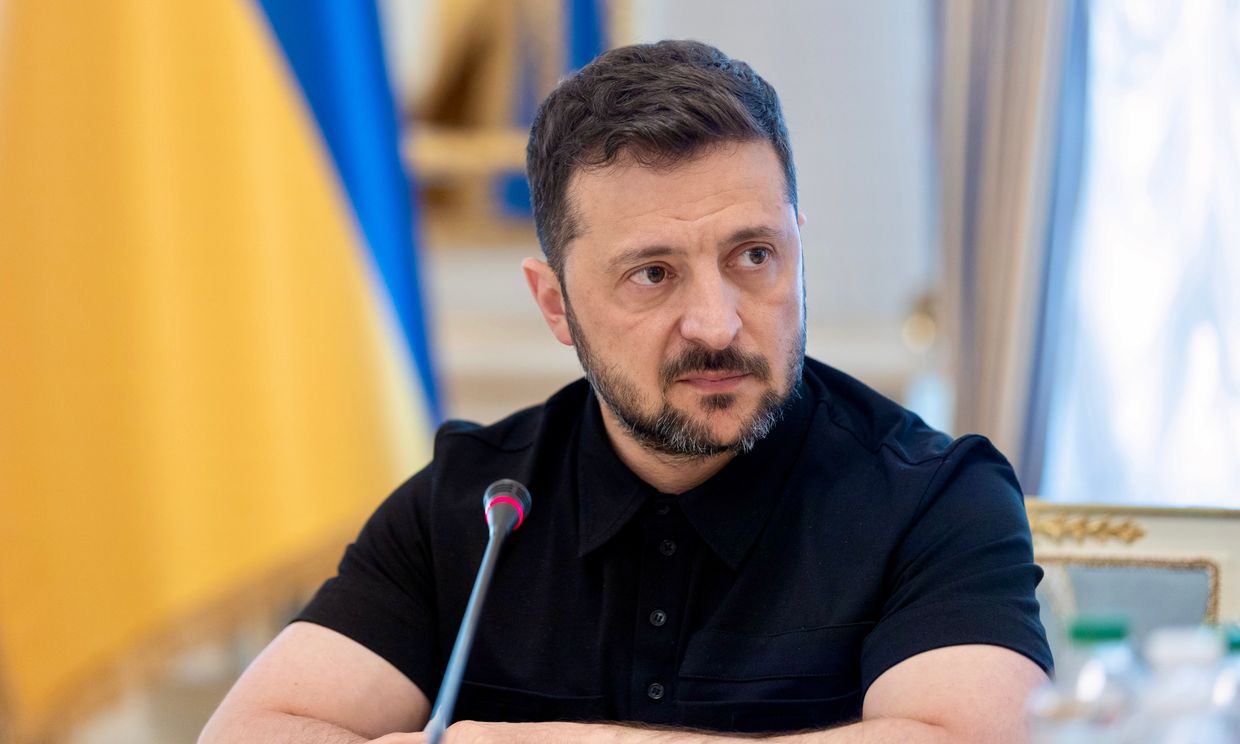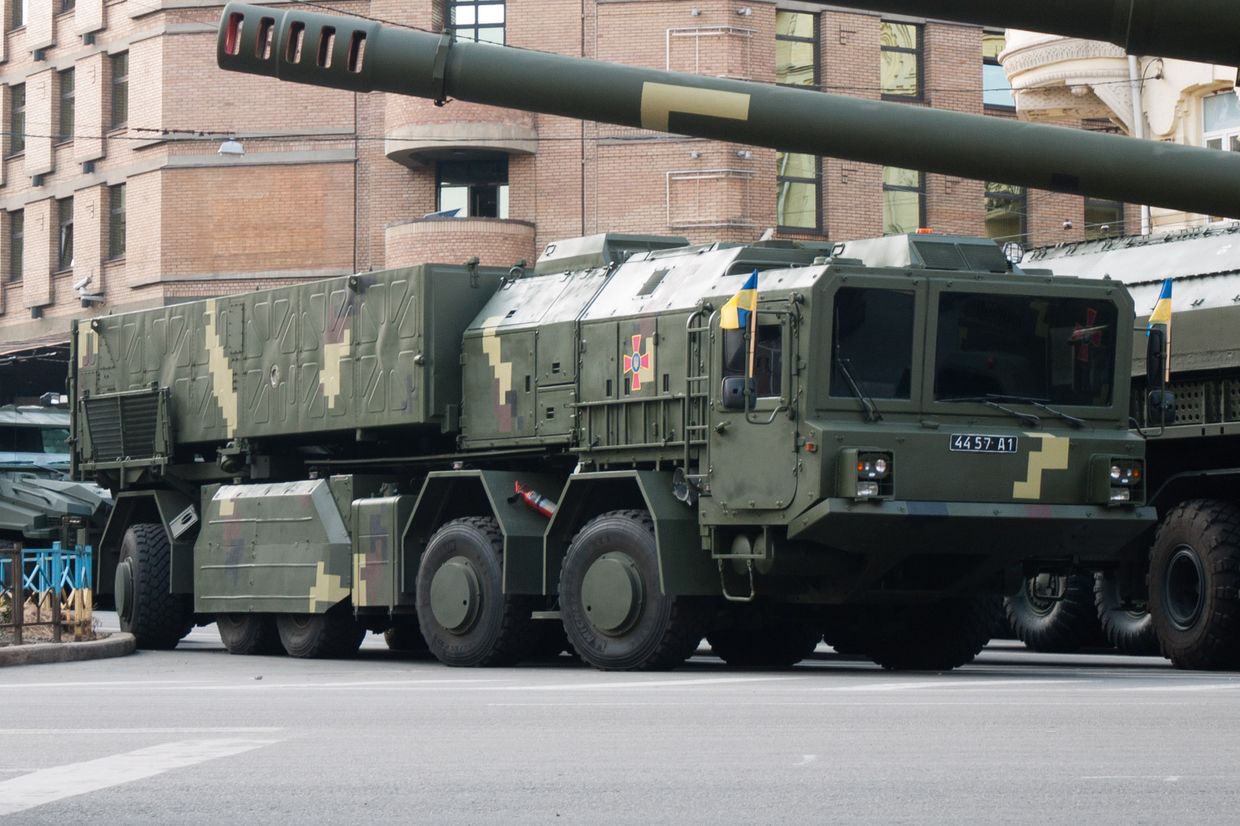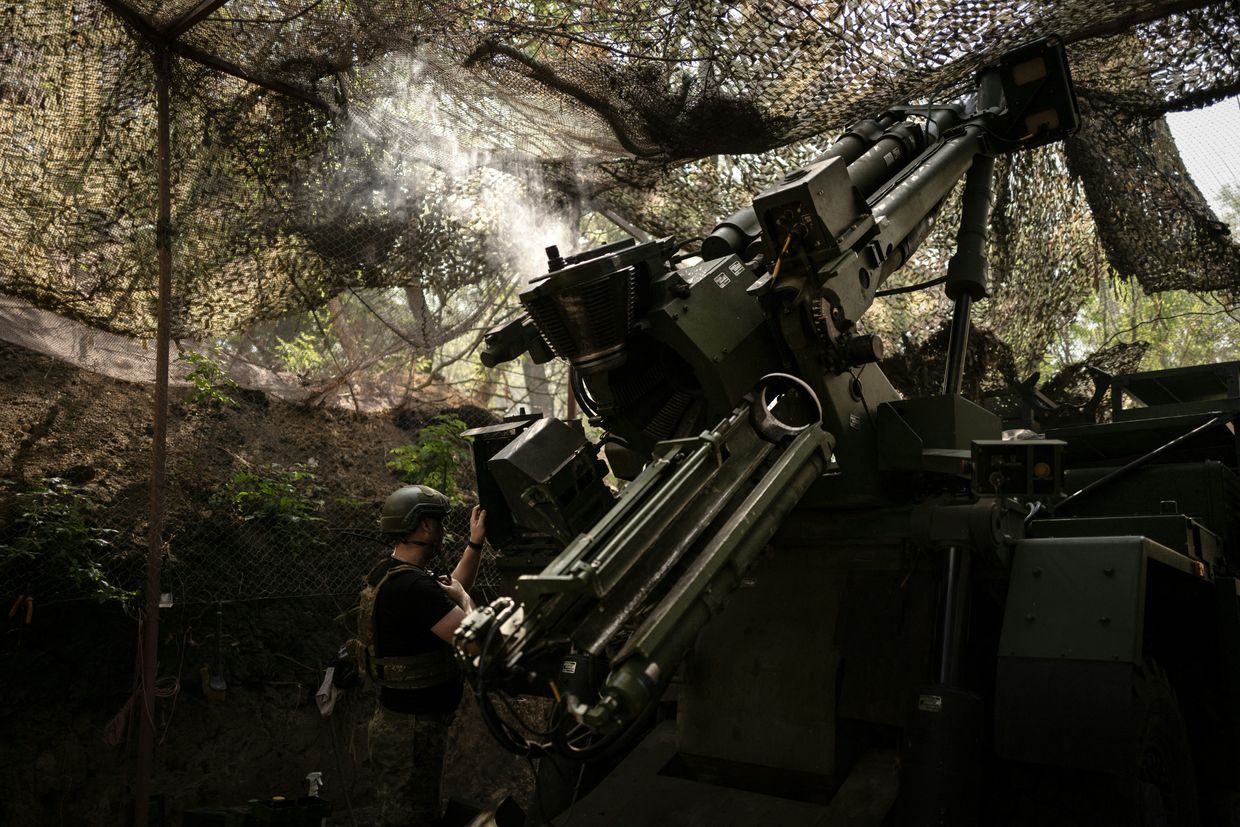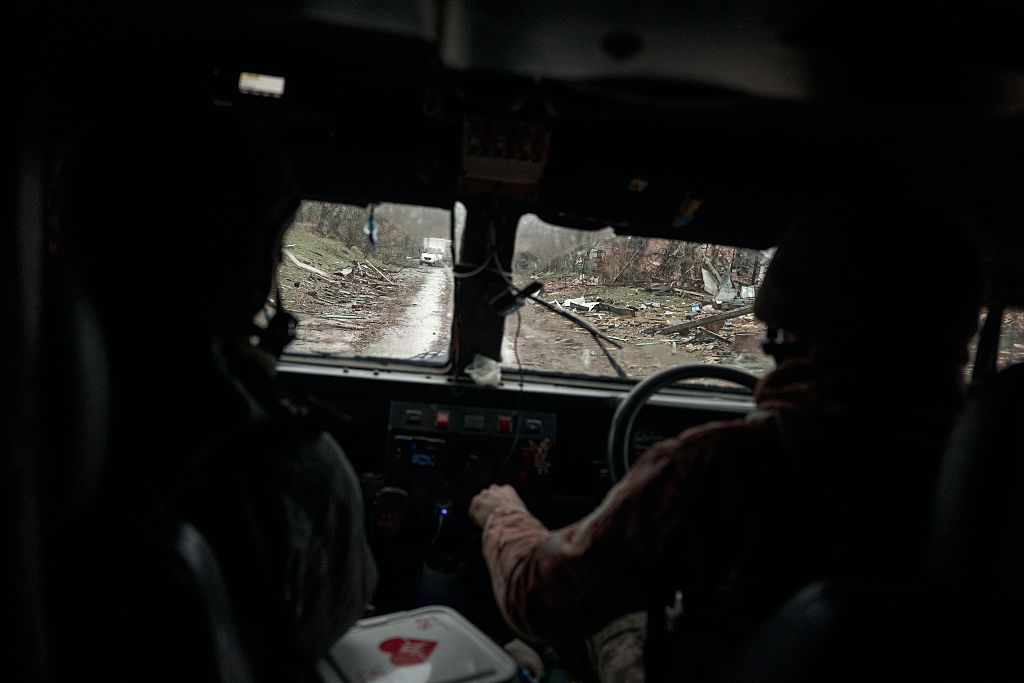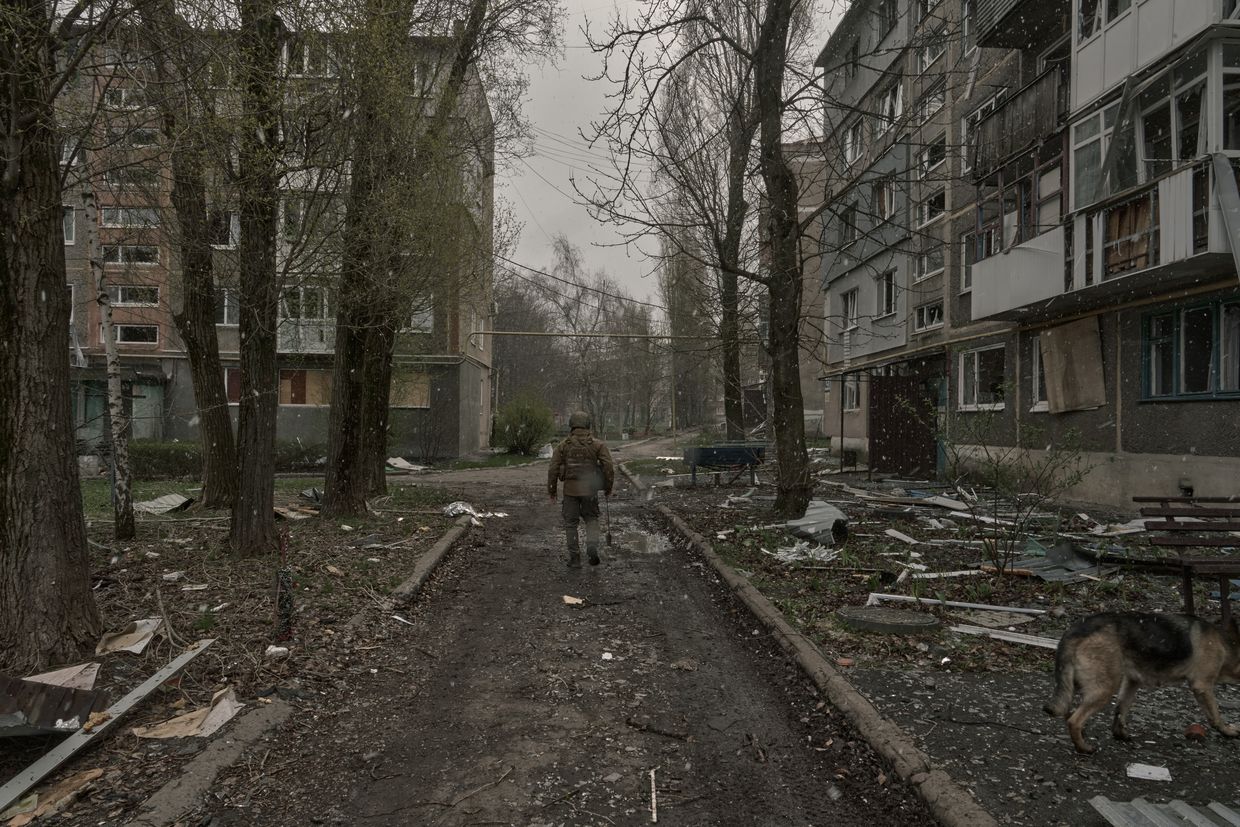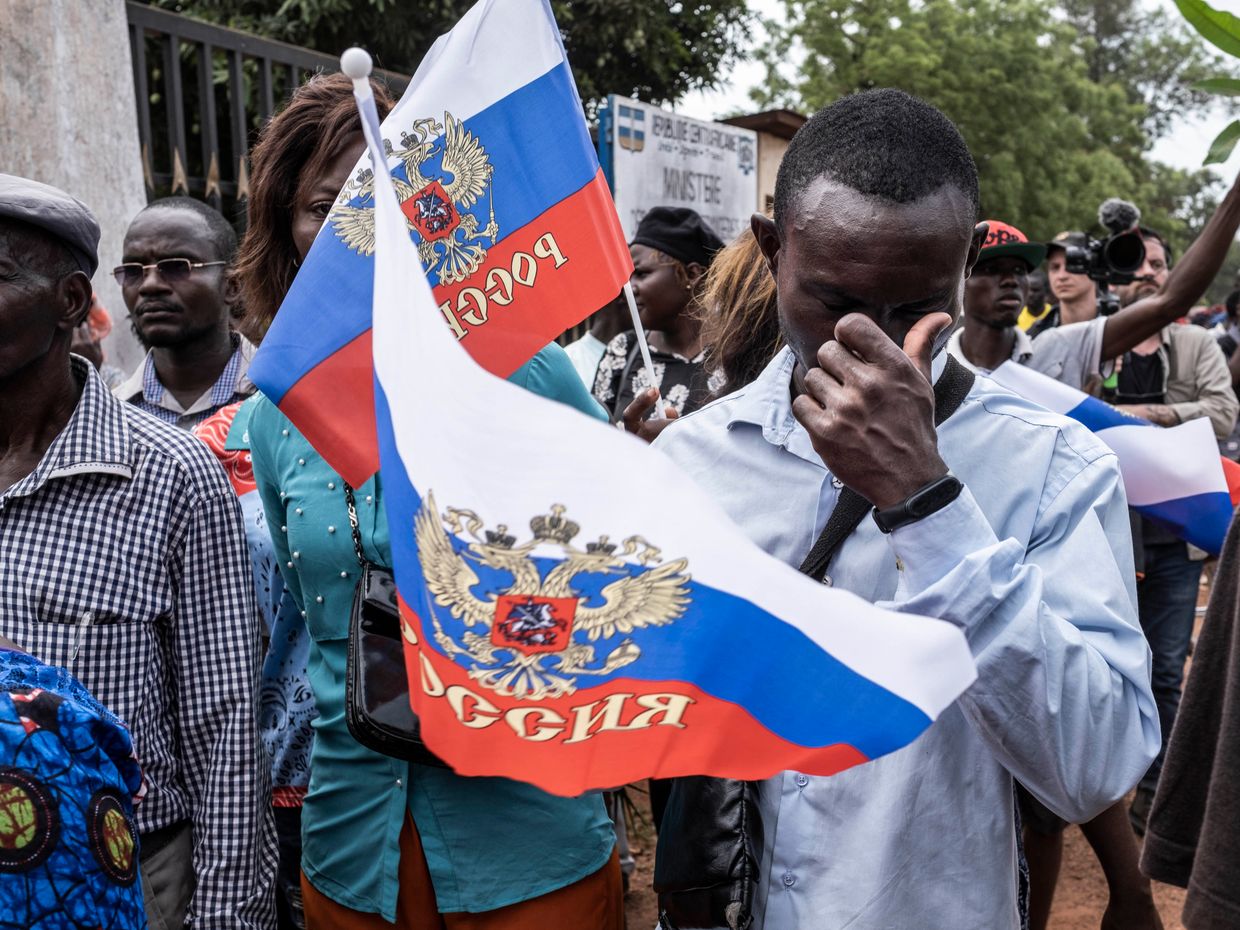Editor’s Note: The last names of some of the people interviewed for the story are not disclosed due to security reasons.
KUPIANSK, KHARKIV OBLAST – Just 40 kilometers away from the Russian border, in Ukraine’s eastern Kharkiv Oblast, stands a small town scarred by months of occupation and ongoing relentless shelling.
Once home to about 27,000 people, Kupiansk now has only about 20% of its pre-war population left.
Some 5,500 people stubbornly refuse to leave Kupiansk, even though the Ukrainian authorities announced the obligatory evacuation of settlements in the area on Aug. 10 – nearly a year after much of Kharkiv Oblast was liberated from Russian military occupation.
But now the din of war is growing louder again in Kupiansk as the Russian forces, on the offensive, relentlessly attempt to push west. The town, and its bridge over the Oskil River, are once more an important military objective. The nearest section of the front line is just nine kilometers to the northeast of the town center, putting it well within artillery range.
Nevertheless, some of the town’s residents have no intention of abandoning their homes, even with the risks of shelling and death. We visited the town this fall and spoke to a few of those who continue living there in defiance of the Russian threat.
The gardeners
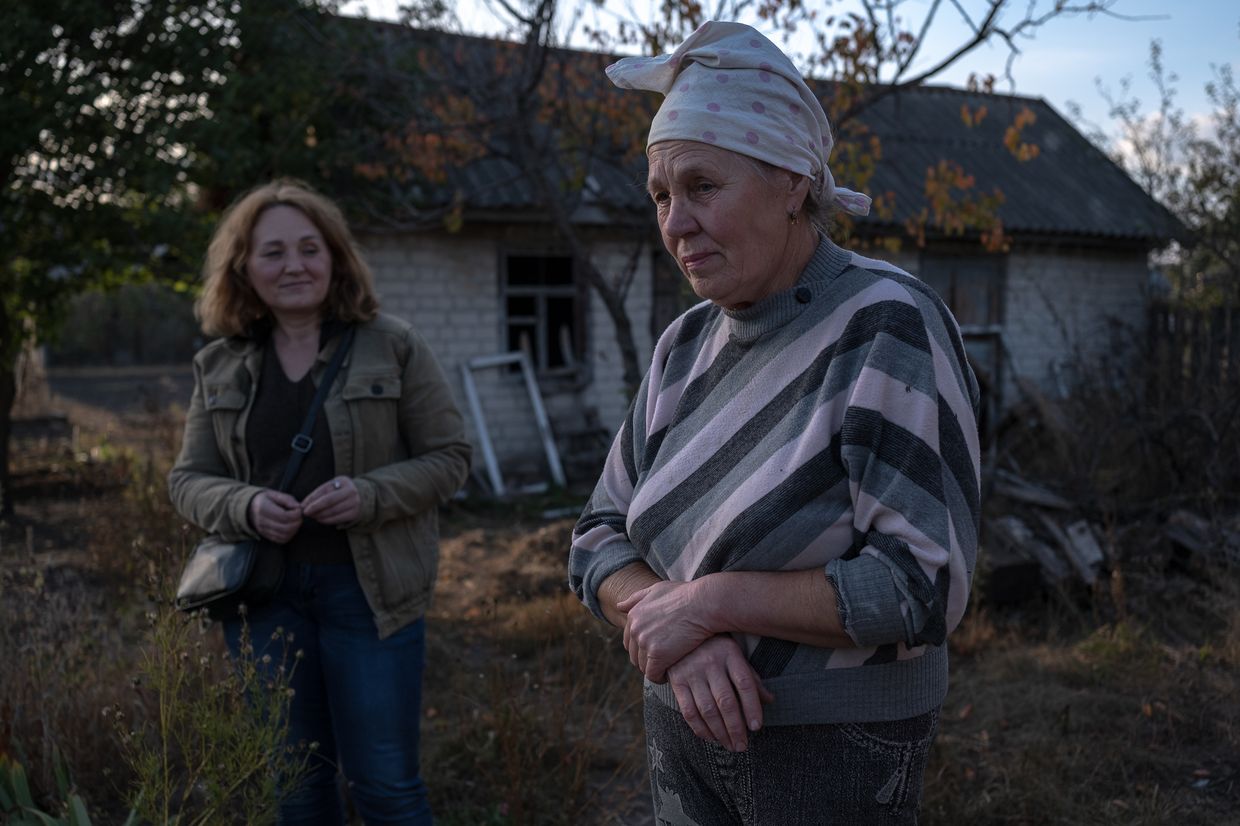
Nadiia Dehtiarova’s house of 75 years, on the eastern side of the Oskil River (the side closest to the front line) is flanked on all sides by large barricades made of old boards. Nadiia’s husband shows us, however, that this protection is not 100% effective. When a shell exploded right in front of the house’s gate, the glass in one of the front windows was broken, despite the makeshift shielding.
Behind the house is a spacious garden covered with vegetable beds, some of which have already been prepared for winter. Vegetables are piled up in boxes scattered here and there. Nadiia says that there was so much work in the garden during the harvesting season that at the end of the day her arms and legs ached, but thanks to this effort, they are well-stocked with vegetables for the winter.
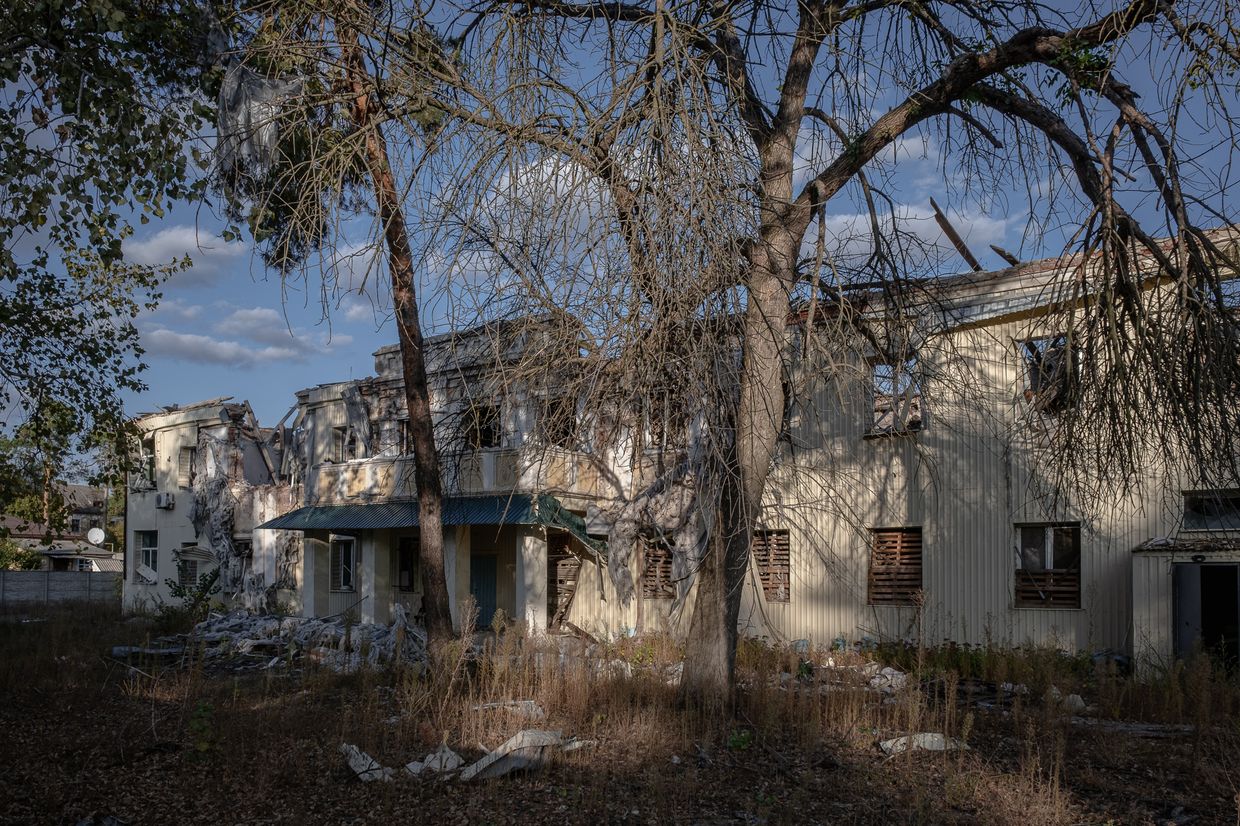
Nadiia is afraid of the frequent air raids – she says only fools are not afraid. But she refuses to leave, despite her son regularly pleading with her to move to his home in Kharkiv. Even the risk of the Russians returning will not make her budge. “And what do they need me for?” she asks.
The neighbors
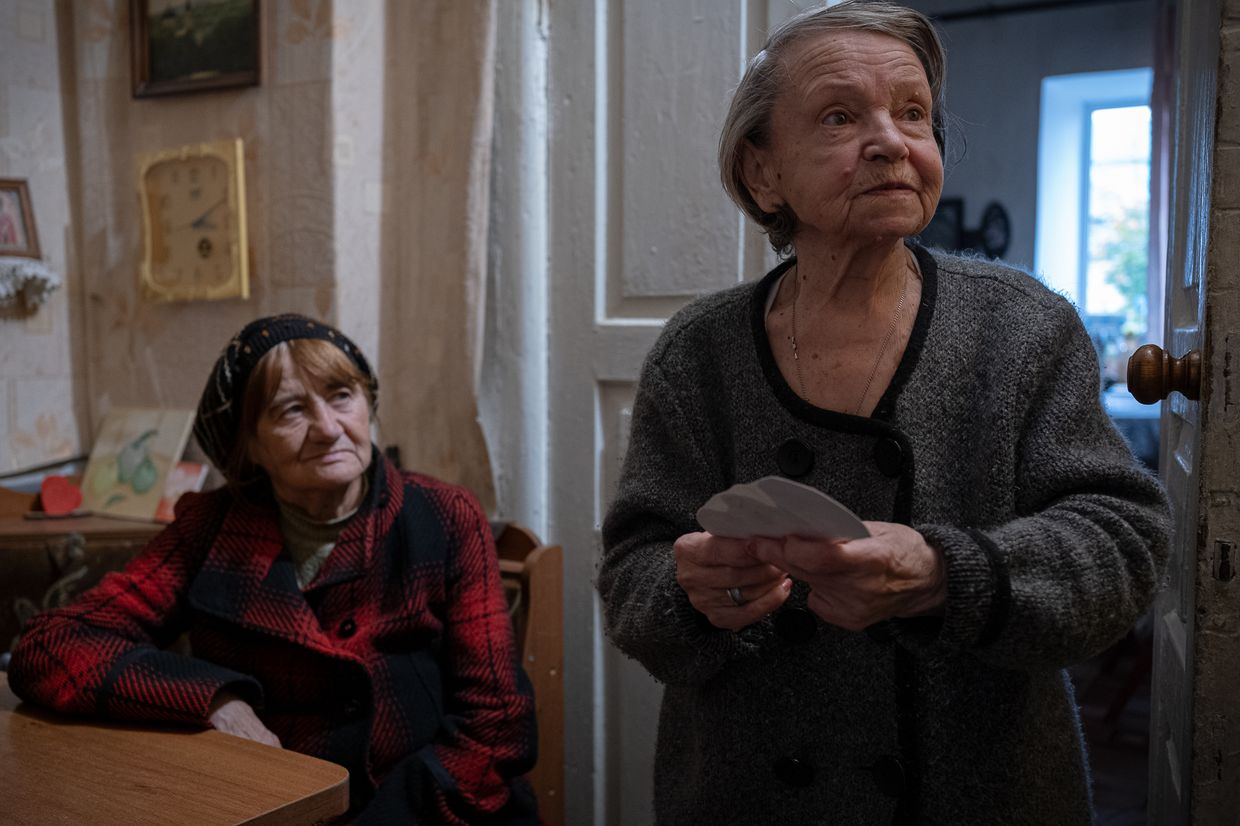
Larysa Haivan, 79, is a retired English teacher who suffered two heart attacks before the war. A petite old lady, she tries to speak English, but her memory is failing her, and she can barely string a single sentence together. She is still fit enough to walk unaided, but never leaves the house out of fear. She and her neighbor, Tetiana, who is 71, both admit to taking sedatives on a daily basis. “I take medication and wait for victory, what else is left for me?” says Tetiana.
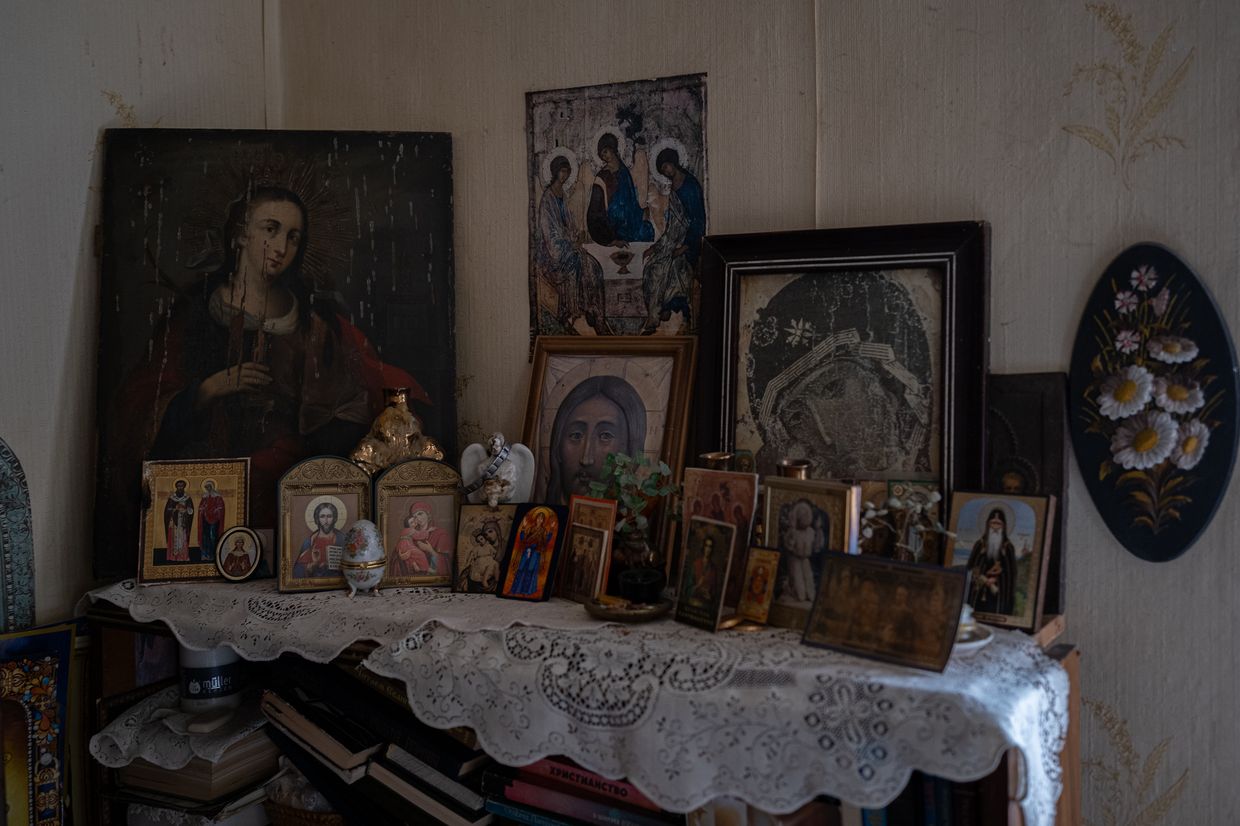
Tetiana was born in China, but has lived in Kupiansk since she was three. She tries to drown out the horrors of war with laughter; she jokes about the pizzas she recently improvised, partially with canned food.
Tetiana is clearly more optimistic than her older friend. She recalls her geography teacher explaining that Ukraine could be great and strong thanks to its natural riches. In Tatiana’s view, the key to winning the war now is to take back Crimea, which has been under Russian occupation since 2014.
The electrician
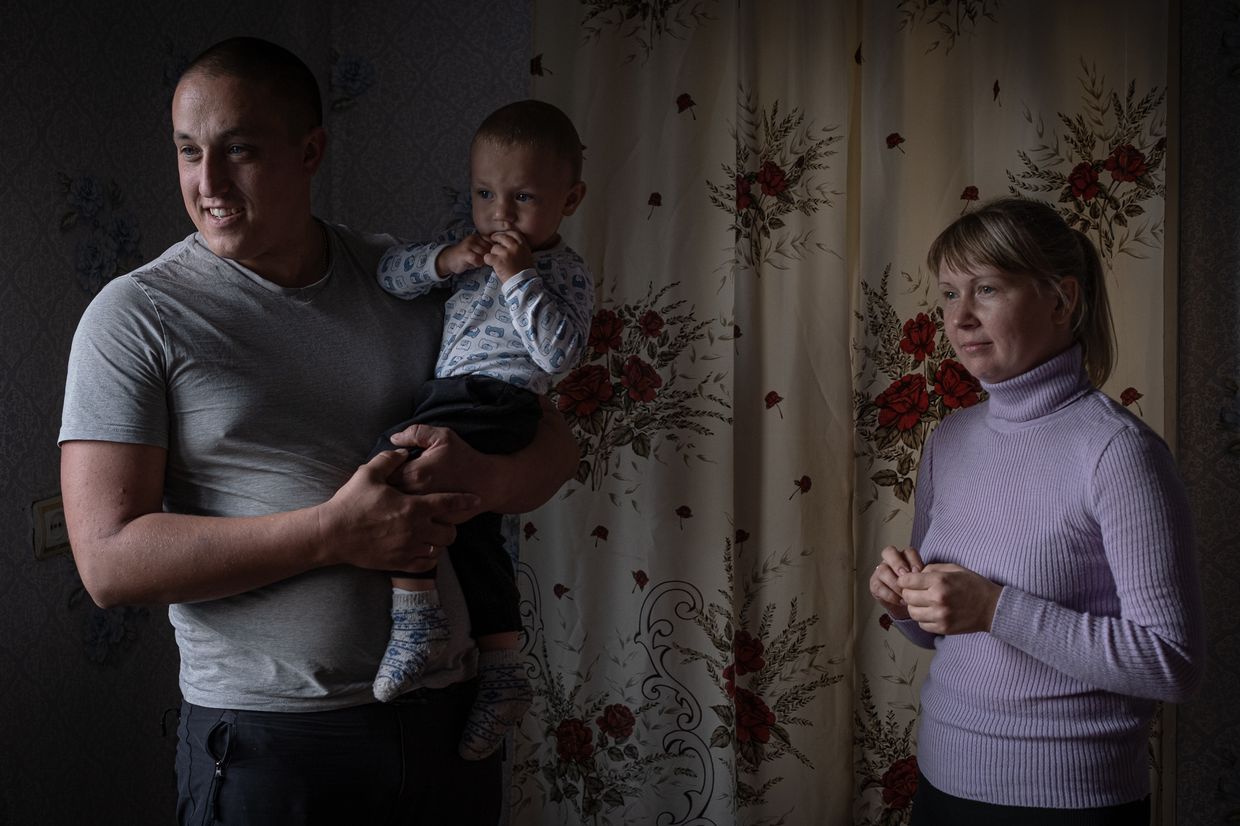
Thirty-two-year-old Yevhen Fenko – known as Zhenia – is an electrical engineer servicing the area’s power grid, which often means repairing the same kind of damage day after day. He has lived on the left (eastern) bank of the river since 2013. His wife Olha and 18-month son Mykola moved to a village a dozen kilometers west immediately after liberation, when Russian artillery strikes intensified. They visit Zhenia for two days a week. His side of the town is clearly more damaged. Inside the flat, however, and despite the danger, there is a warm, family atmosphere.
Zhenia’s parents still live in Petropavlivka, a village even closer to the front line. Before the full-scale invasion, more than 3,500 people lived in Petropavlivka; now it’s around 300, according to Zhenia. Of the 100 houses on their street, only six have inhabitants.
The period of occupation was very stressful for Zhenia – no one was sure what to do, but it was decided that they would try to work as normal, serving the people, regardless of the hostilities. Zhenia says he was surprised how many of the town’s residents supported the invaders, and how readily they exchanged their Ukrainian passports for Russian ones, and even re-registered their cars. They were usually people in their 60s, nostalgic for the Soviet era, Zhenya says.
Zhenia is ambivalent about the prospect of further hostilities: he says he wants victory, and believes Ukrainians need it to build a modern, free state. On the other hand, he is aware of how much blood every meter of liberated land costs.
“It's too high a price,” he says.
The bakers
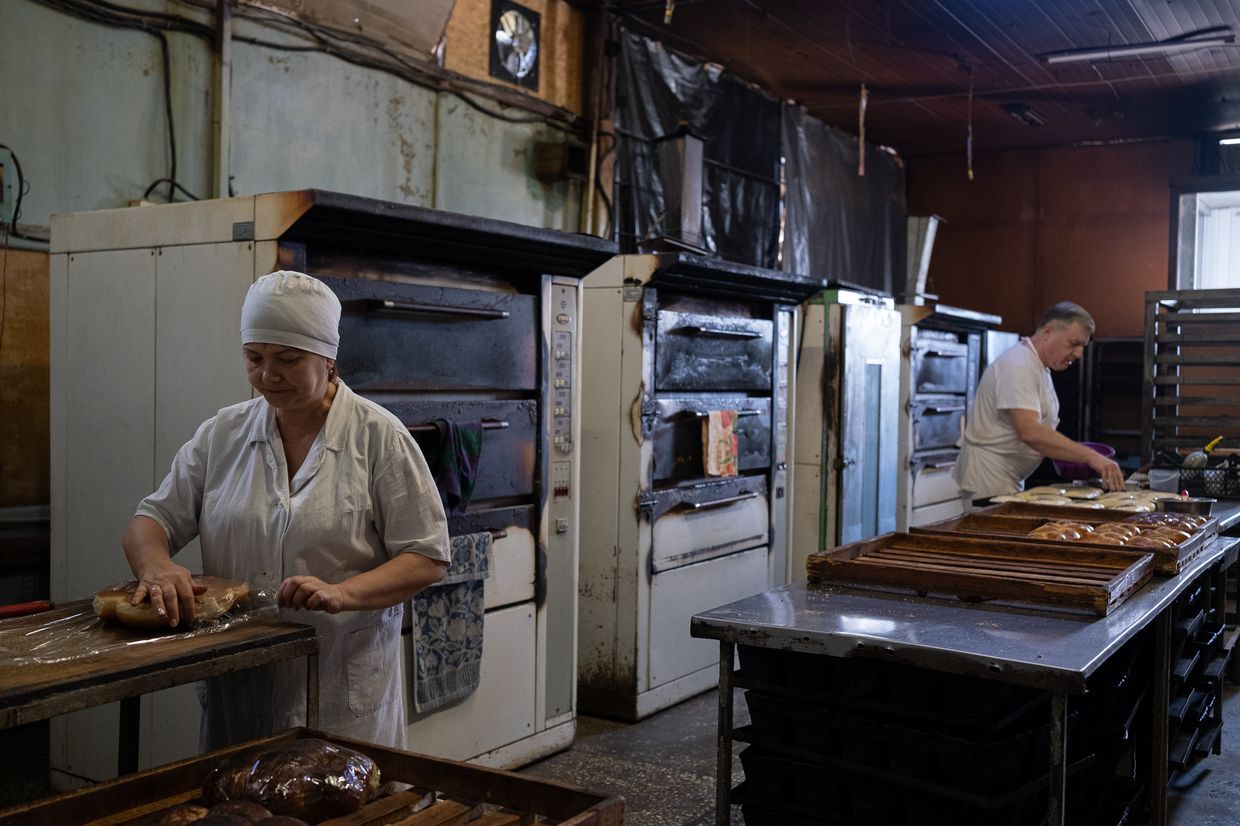
Despite Zhenia’s efforts, the town bakery still faces serious difficulties due to power shortages. Nevertheless, Oleh Sverzhin, 55, who has been running the bakery for 30 years, is not leaving. “Where would I go?” he asks. “Here is home, here is work.”
For more than a month after the town was liberated, Oleh was unable to continue his business because of the blackout, but otherwise the bakery has run at all times. He is proud of his work to feed the town but refuses to be described as a hero.
The spacious baking room smells delightfully of fresh bread. But the windows, just under the ceiling, give no light as they are covered with cardboard.
“We work at night,” explains bakery worker Iryna Olinek, 44. “The fear is that (the Russians) will see the light and shoot at us. We work, and all the time we hear explosions.” Iryna has been working in the bakery for 18 years, and she also has no thoughts of leaving the town.
Oleh misses his children in Ivano-Frankivsk, whom he has not seen for two years; he could visit them, but his work does not allow him to do so. “People have to eat every day, and not enough bread is baked anyway.” Oleh is a well-built man; typically for a baker, he wears white. He is the archetypical gentle giant. He grimaces only when talking about shelling.
“It’s something you just can’t get used to,” he says.
Iryna insists that Kupiansk is not a pro-Russian town, and says she is hurt by the bad reputation that has tainted its name since the occupation. Despite this, she holds no grudge against the ex-mayor, who collaborated with the Russians. In her opinion, he had no choice.
The mayor
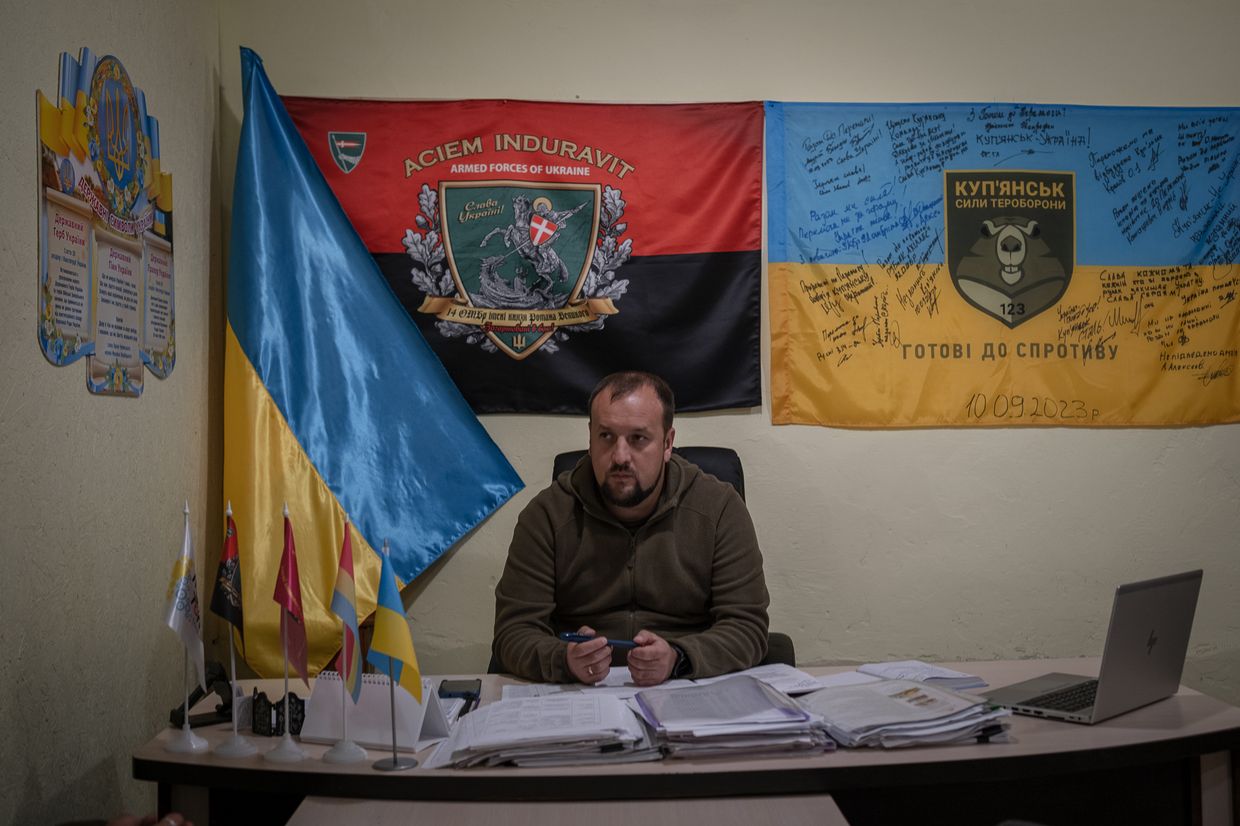
Current mayor of Kupiansk is Andrii Besedin, 40. The town was surrendered to the Russians by Besedin’s predecessor, Hennadiy Matsehora. It is rumored the collaborator is now in Moscow. But according to Andrii, the surrender was unavoidable. Kupiansk is located just 40 kilometers from the Russian border and since the regaining of Ukrainian independence in 1991, its residents had been half-expecting Russian aggression, Besedin says.
The nightmarish combination of the coming winter and Russian shelling are the biggest challenges currently facing the town, the mayor says. At the moment, a large proportion of houses remain empty, but the people who remain need as much normalcy and as many supplies as possible, he says.
The storekeeper
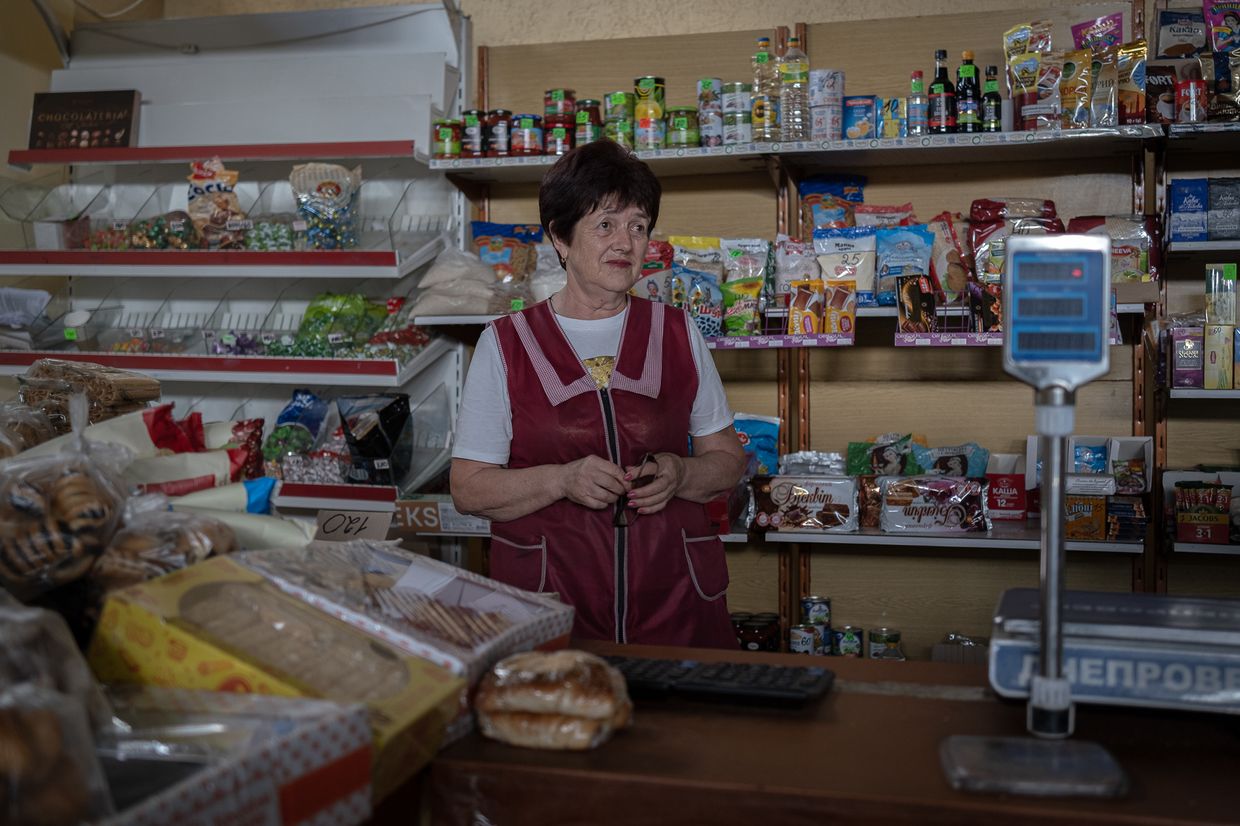
Vira Pecherytsia, 66, runs the Kalyna grocery store next to the bakery. She says she stayed because if they bake bread, someone has to sell it. She worked under Russian occupation too, “until, thank God, our people (the Ukrainian army) came.”
The counter in Vira’s store is filled with cans of polyurethane foam, small tools, and protective gloves for making repairs, as well as some trinkets. All of the walls of the store’s spacious interior are decorated with Ukrainian folk designs. By the door hangs a hand-painted poster with a quote from Ukrainian national poet Taras Shevchenko: “Love your Ukraine, love in terrible times, in the last difficult minute, pray to God for it.”
The post office clerk
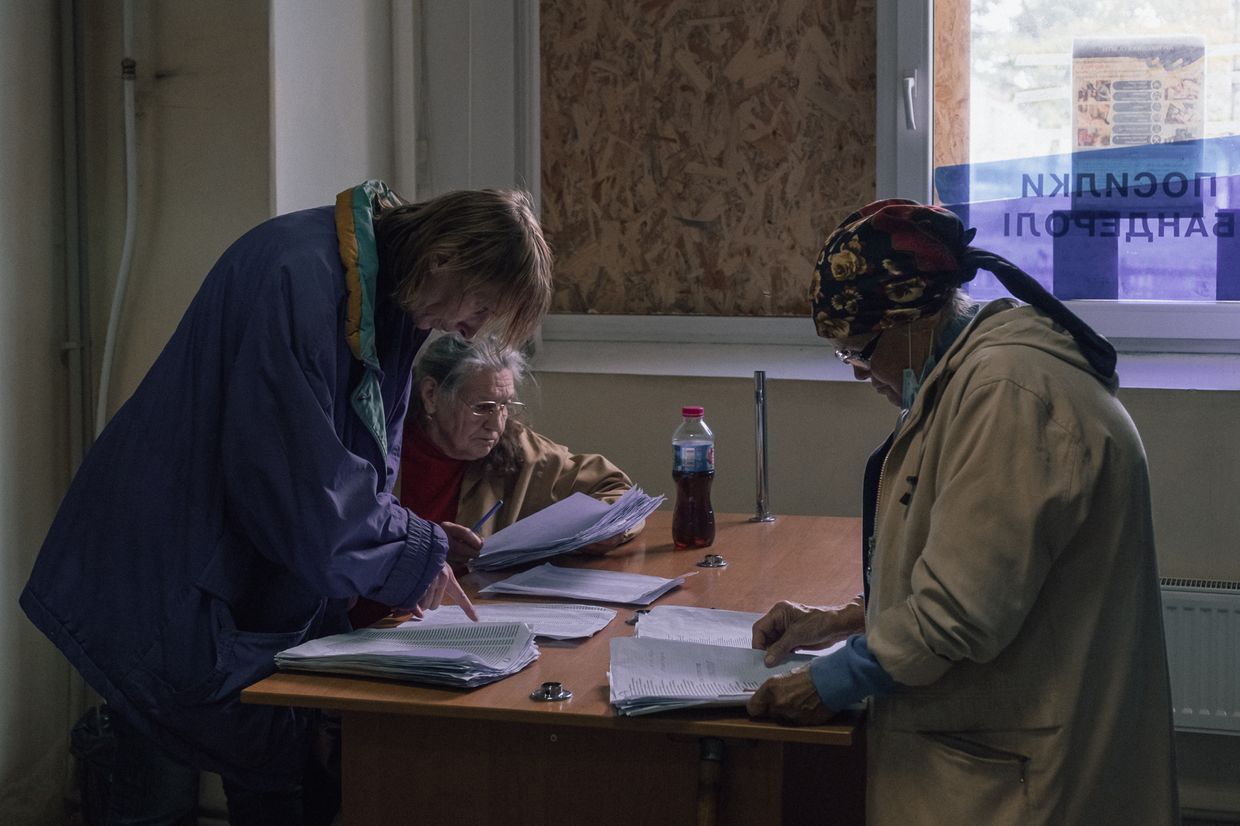
The Ukrainian post office (belonging to the state postal company Ukrposhta) is very busy, as currently there is only one such office open in the town. All four counters are operating, but there are long lines every day. People collect pensions, and benefits from the state and humanitarian organizations, pay bills, and receive and send parcels here – just like at any regular post office.
Behind one counter sits Larysa Herasymenko, 51. She lives on the left (eastern) bank, where she says explosions can be heard every day. But she too firmly rejects the idea of leaving: “This is where I was born, where I got married, had a baby, and lived to see a grandchild. Where would I go now?” she asks.
The doctors
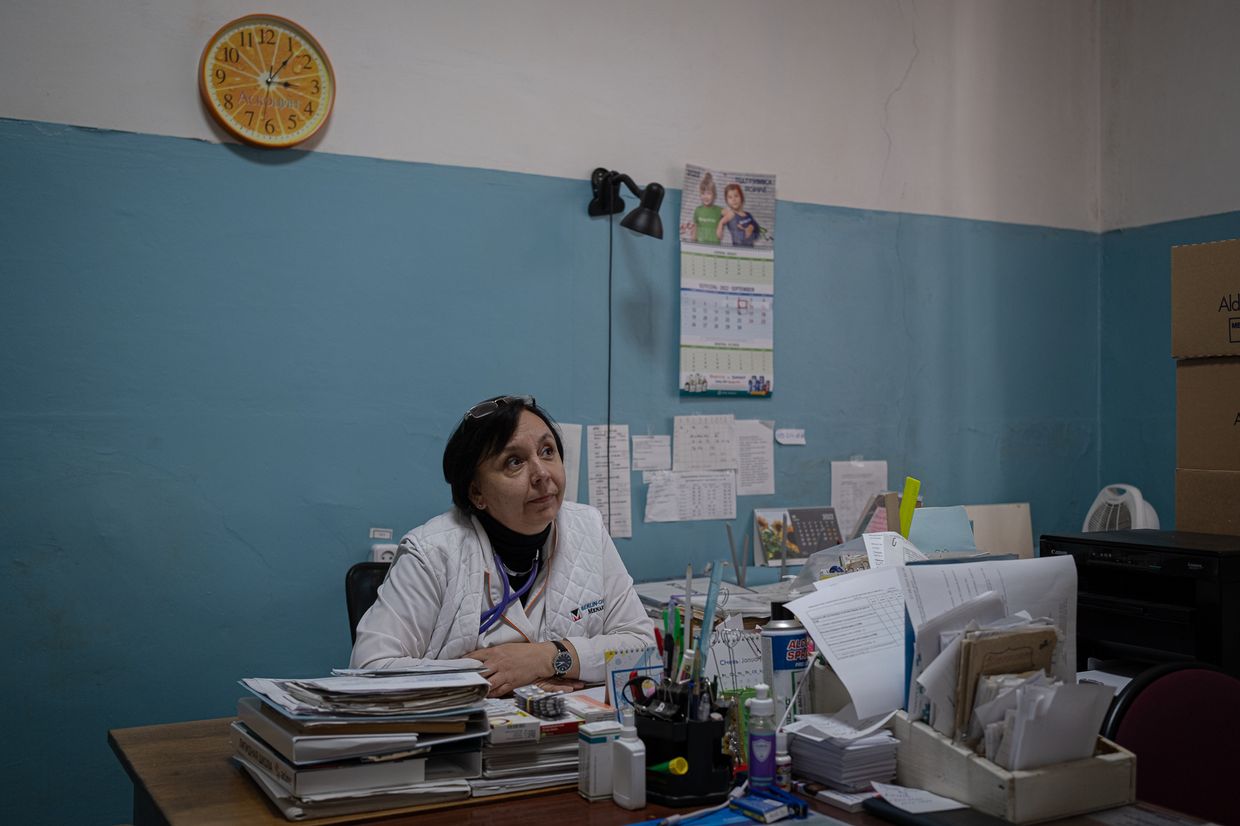
There is currently one medical clinic working in Kupiansk. In better times it had more than 40 staff members; today the personnel has shrunk to just six. All are women, and all are natives of Kupiansk.
The corridors of the clinic are high enough that at first one pays no attention to the ceiling, which is heavily cracked and stripped of plaster – the result of past bombardments. Being under such a ceiling is unnerving, although the staff does not seem to mind it. The clinic operated without significant interruptions throughout the war, including during the Russian occupation, but it faces constant shortages of medical supplies.
Explosions nearby may have left visible scars on the building, but the spirit of the staff has not been broken. Valentyna Kovalenko, 52, a doctor here, says she is not going to leave Kupiansk – in her opinion, it’s just as risky to leave as to stay in the endangered town, as there have been multiple instances of people coming under fire during evacuation.
The fire brigade
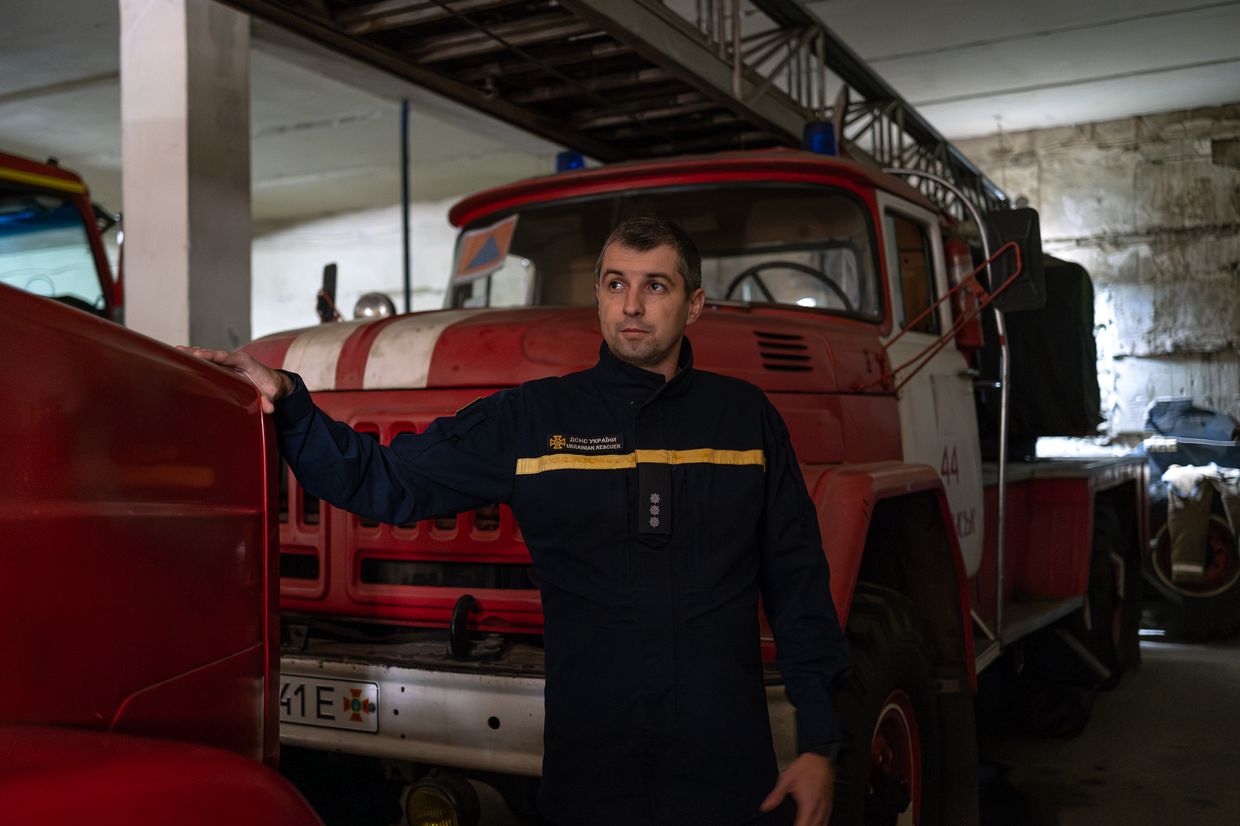
The main problem for Kupiansk’s firefighters is shelling, of course, but fires caused by makeshift heaters in cold apartments will soon become the second most important problem, they say. Working so close to the front is much more dangerous than regular firefighting: four of the seven fire engines of the Kupiansk fire brigade have been damaged by shrapnel. Firefighter Anton Sanin, 30, shows pictures of an ordinary pickup truck laden with firefighters – 16 people were riding on it, he says. They were fleeing the scene of a fire after the Russians started to shell it again. They have been working in bulletproof vests since the first weeks after liberation, and one of them always keeps an eye on the sky in case there is an air raid.
Yevhen Yersukov, 31, came to Kupiansk from a district subunit after the destruction of its fire station. He worked as usual even during the Russian occupation.
“There was no order to leave,” he says. “We lived, we worked like cockroaches, they (the Russians) could stamp on you at any time. And now we have to both run fast and hit the dirt quickly,” he quips about the shelling.
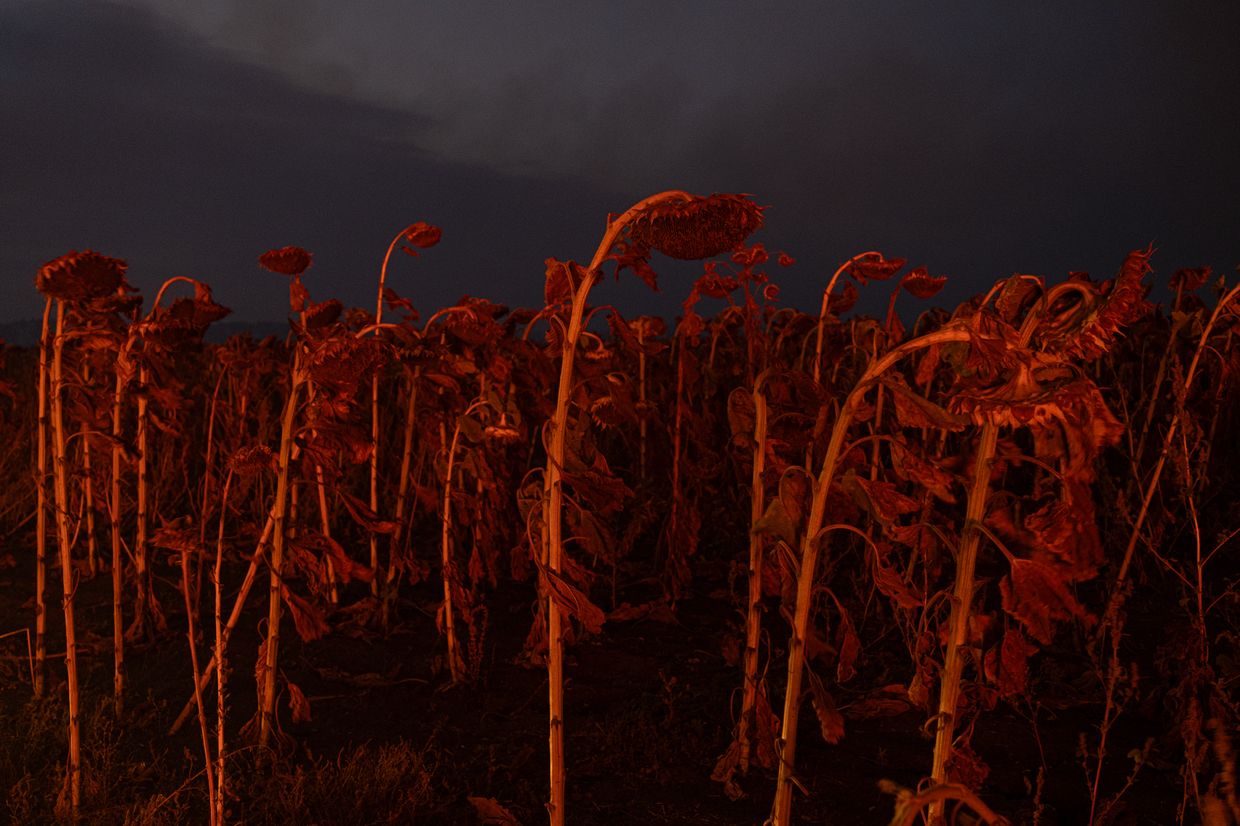
There is a volunteer from Germany among the Kupiansk firefighters. Nils Tal, 36, is a professional firefighter, who says he came to Kupiansk for idealistic reasons.
“This is not just their war,” he says, “it’s a war for freedom, equality and democracy.” Last spring Nils was in Kostiantynivka, Donetsk Oblast, and the year before in the city of Kharkiv. During the Kakhovka dam floods that devastated the south in June, he was working in Kherson city – he is not afraid to risk his life. He doesn’t speak Ukrainian, but knows how to do his job, like every firefighter the world over.
The soldiers
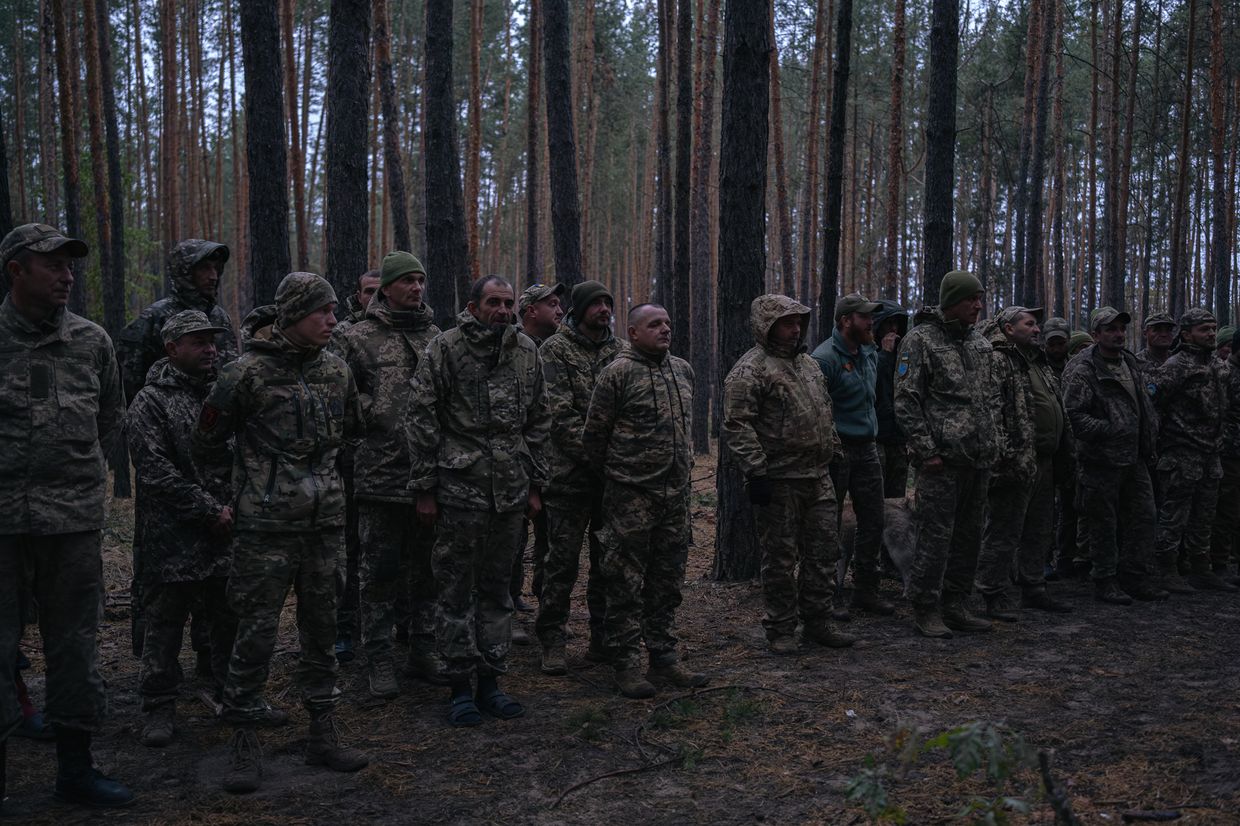
A subunit of the Ukrainian army’s 41st Mechanized Brigade is stationed in the forest, on the outskirts of the town. A block of flats where families with children still live looms close. The unit has been formed from a few soldiers surviving from an unit previously broken up at Bakhmut, reinforced by a large group of new recruits. Their current task is to move the trenches further east, closer to the Russian lines. “Kruzo”, 41, is in command.
The soldiers live in dugouts, and will spend the winter in difficult conditions. However, Kruzo says they are so busy that after a while they stop feeling the cold and the dread. According to the soldiers, their training leaves much to be desired, as with their equipment: not everyone in the unit has a potentially life-saving tourniquet.
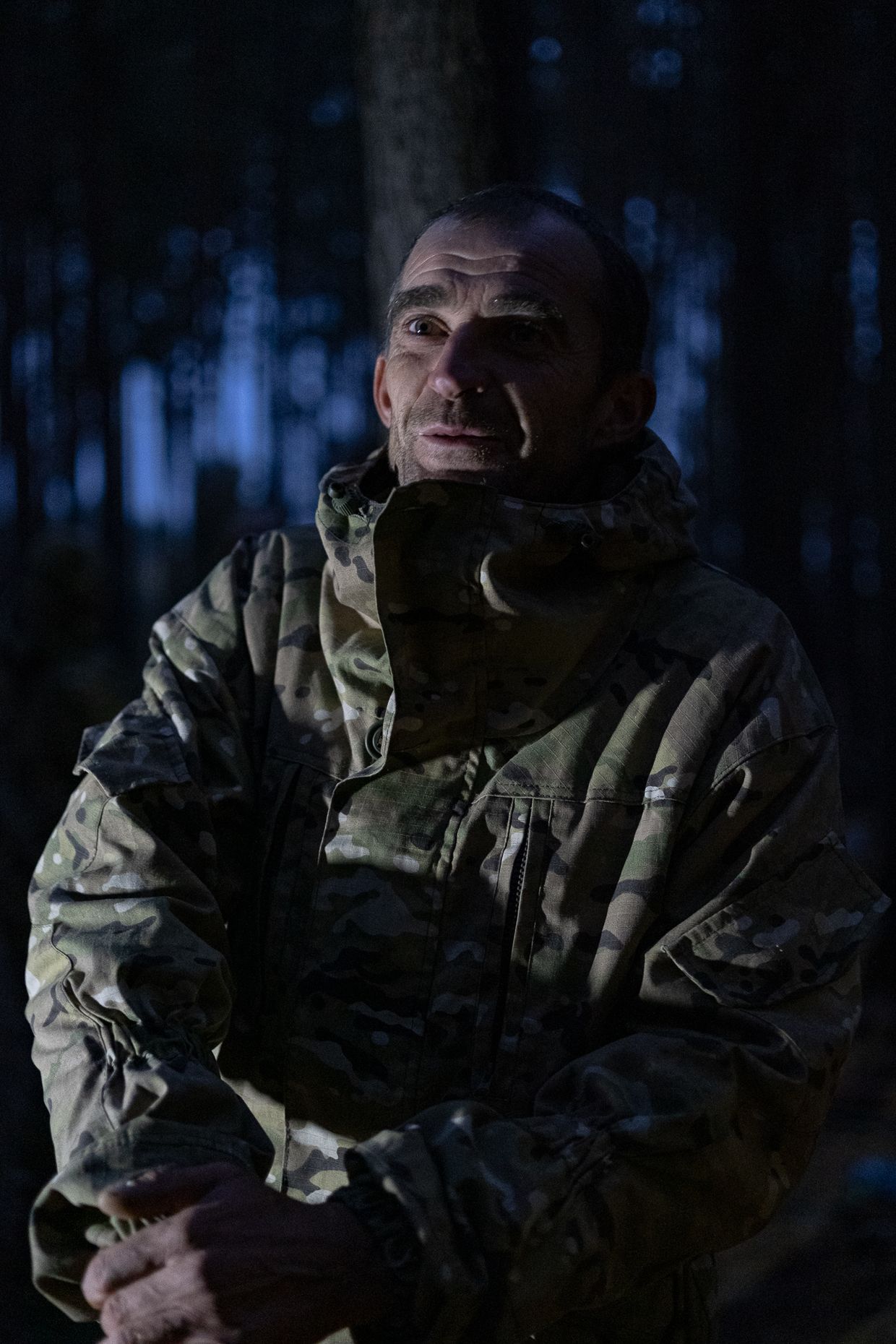
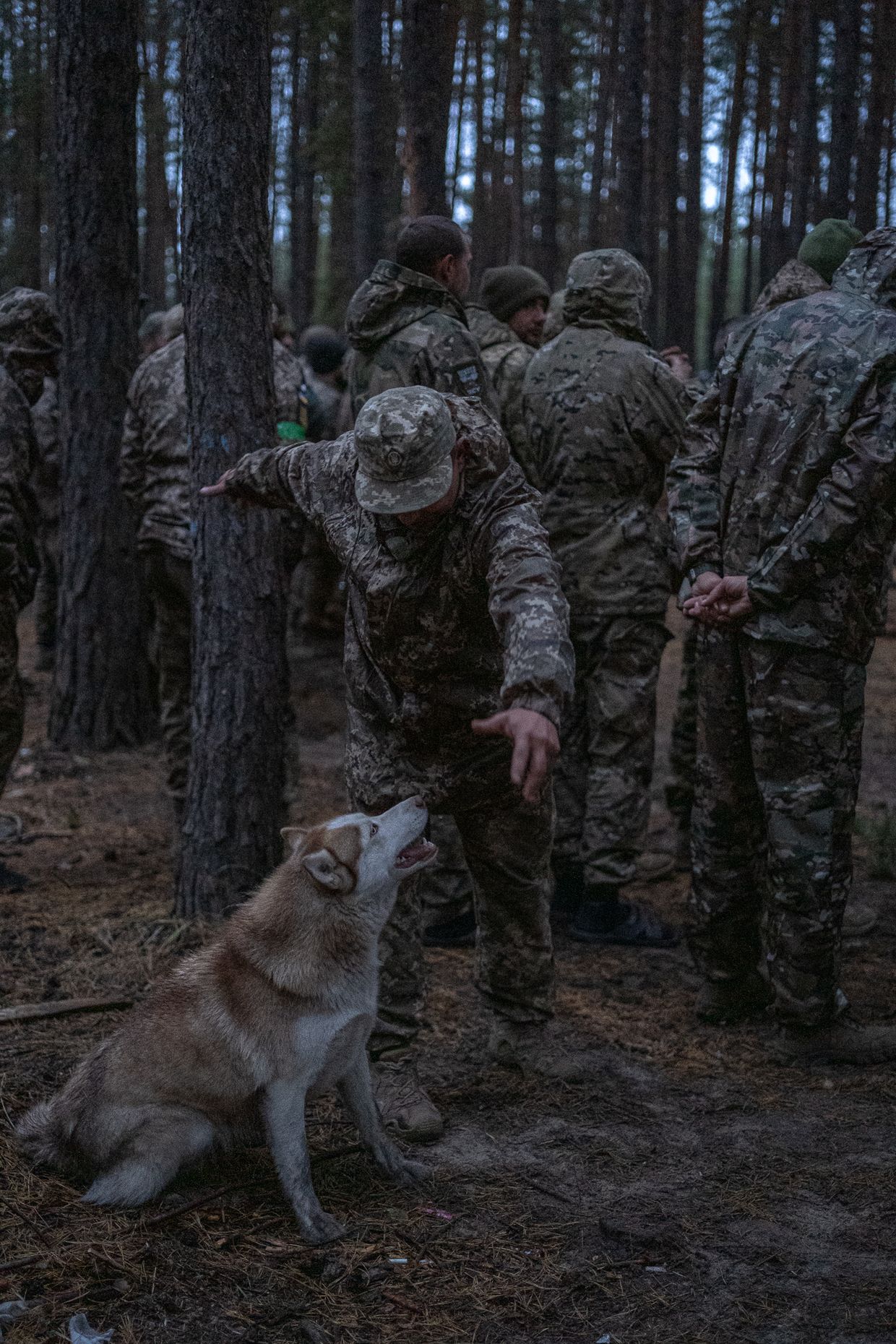
One of the soldiers, “Ron,” 45, looks much older than his age in years. When he recalls the Bakhmut battle, he finds it hard to contain his emotions. He lost more than 60 of his squad mates there.
The priest
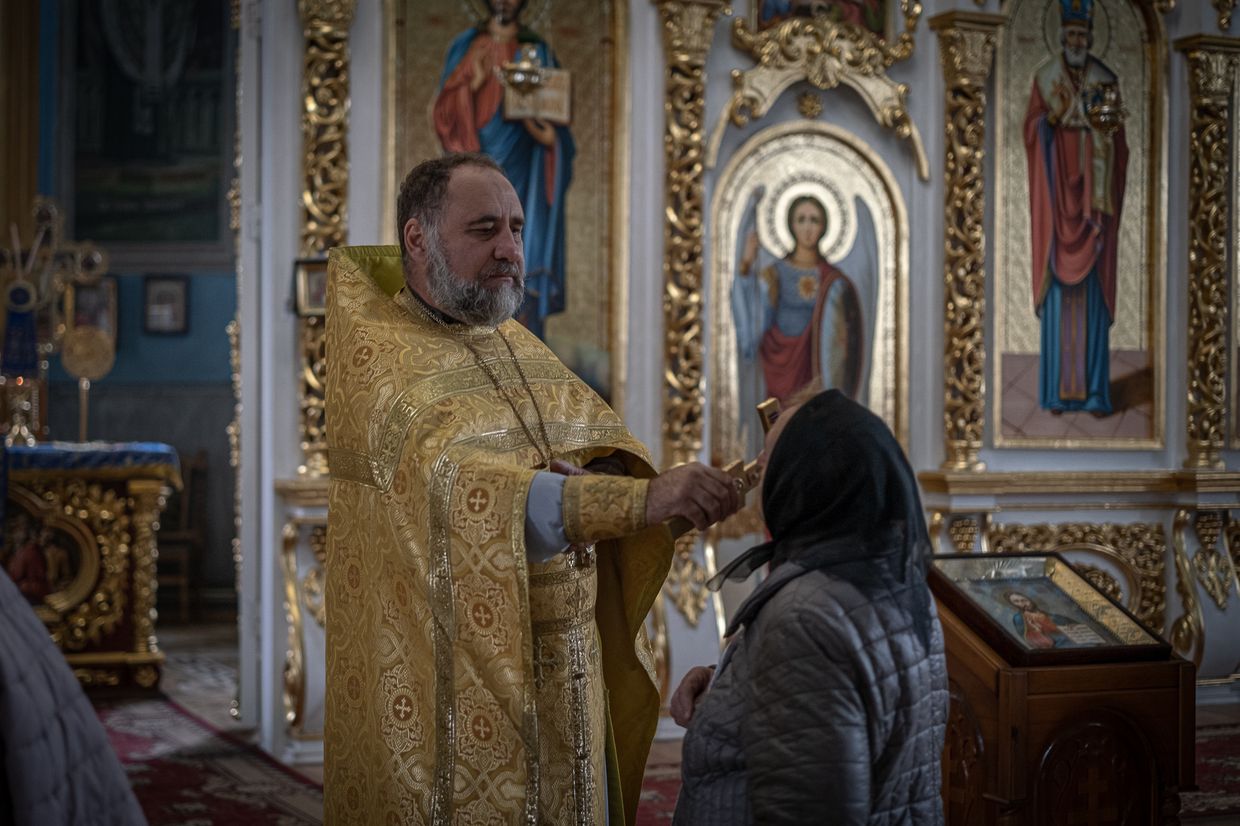
The local Orthodox church stands out from its surroundings – it is unscathed by shelling. The local priest, Father Anatoly Shprakha, has been serving here for 27 years. He has continued conducting services throughout the full-scale war.
The church belongs to the Moscow Patriarchate, but the priest is unequivocally pro-Ukrainian. He conducts services and sings in Ukrainian, while the choir sings in Russian.
“To conduct the liturgy purely in Ukrainian, a whole generation would have to be re-trained,” he says. “I know Ukrainian hymns, but my flock does not.”
Father Anatoly fears for the future, for the time even after the guns finally fall silent.
“People here are living on a knife’s edge,” he says. “I don't think anyone here bothers about what will happen after the war. But our soldiers, when they come back from the front, they tell me that they don't feel needed at home anymore. Do you understand what is coming? Another war in minds and hearts. After this war, God help us to finish it, another one is already waiting.”
He says one thing keeps him safe: “I pray to God. What more do I need? What else can I do?”
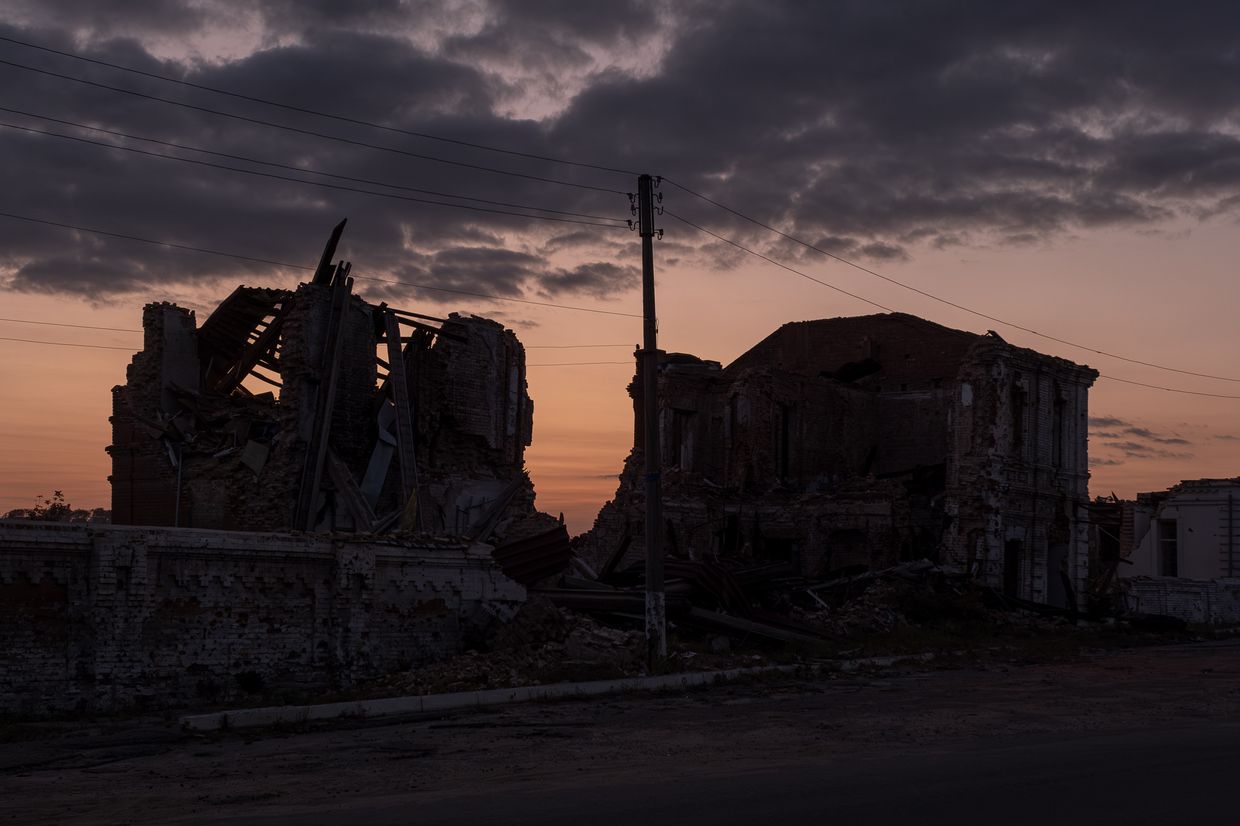
Translated by Norbert Łasak
